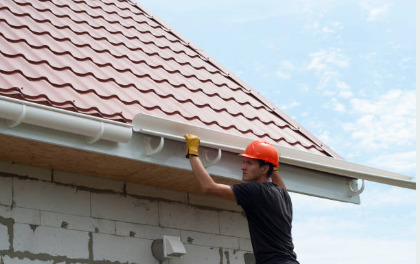
Some home maintenance problems can be postponed until you have time to deal with them. A faucet that drips slowly can wait until the weekend; so, it can squeak hinges on a door. A leak in the roof, however, must be fixed immediately. This can lead to both short and long-term dangers that can have serious effects on your home and family.
Take safety as a priority and make sure your house is safe for you and your family by hiring experts in the area such as Gold Coast Edge Protection. Here all your priorities will be considered, and we will ensure keeping hassle to the lowest level possible.
However, let’s mention some of the essential aspects to keep in mind regarding leaking roofs:
Cause and Size
The leak could have one of several causes ranging from damaged tiles to improperly installed flicker. Whatever the cause, the roof leaks allow the water in your home instead of providing protection from the elements. A small leak causes less problems than a large leak, but any size of the water leak causes damage to the house. The more time it takes for you to repair the leak, the more extensive the damage is.
Initial dangers
Initial dangers of a leaking roof include water damage to items stored in the attic. If the house does not have an attic or if the leak is large, then the leak will damage the roof of the house. Painting of the affected ceiling will darken, and the plaster bubble of the roof may and will expand. Leaking water will also damage paint and plaster on nearby walls. If a sufficient amount of water is reduced through the roof, you could see damage in the lights and ceiling fans – mounted.
Long-term hazards
A leaky roof has several long-term hazards. Damp wood supports that hold the roof can sprout mould and rot. Over time, they will weaken, which affects the structural integrity of the house. Water can stimulate the growth of fungi in other parts of the house. That can damage the walls and furniture and can also be a threat to health. Mould can trigger reactions that include skin inflammation and difficulty breathing. Extensive mould infestation can be difficult and expensive to clean.
Considerations
Fixing a leaking roof as soon as you know it is a problem helps deter your hazards to your home and family. Move as much as you can in the form of the leak. Dry everything that gets wet, including walls and support beams, as quickly as possible, and use fans if necessary. Placing plastic tarpaulins and on the outside of your roof will help prevent rain from seeping into the home, but a permanent solution is necessary to protect your home. If you are not able to fix the roof yourself, contact a trained professional so that the work is done correctly.
5 things you should know about waterproofing your roof
The waterproofing of the roof of your house is essential, that will help you avoid damage to the interior of the house, on the walls and of course on the roof. You can get in the market many good products that guarantee your functionality, according to the budget you have available for this job.
If you do not have a good waterproofing of the roof the damage that occurs inside your house will be a greater expense than doing a good maintenance of this finish. This is a job that you can do yourself with a little care and it will cost you a little less if you know how to do it.
Waterproofing can be applied on any roofing material, such as concrete, plaster, artificial marble, cement, brick or other. Currently there are “smart” waterproofing products, which do not require a reinforcing fabric and contain molecules that attach to any surface, diluting them without losing their benefits. This novelty implies a greater expense that you must consider if it is within your budget.
- Deep cleaning of the roof is what is important for a successful waterproofing
A deep cleaning of the roof to be waterproofed is important so that it does not remain in other organic matter such as leaves or stones, which may prevent the perfect adhesion of the waterproofing material.
- Levelling the floor
The cleaning and levelling of the floor to be waterproofed is important, since there is rectified any cracking that is observed, in the ceiling plate, in addition to cleaning and levelling it to slope towards the drainage points that have been left on the surface.
- Extending the asphalt mantle
On the surface already levelled and resurfaced, the layers of asphalt mantle are spread by making a small overlap between them, to prevent water from leaking into the joints. The same is done at the edge of the plate to prevent water from straining throughout it.
- Fixing the mantle with blowtorch
With a blowtorch the asphalt mantle is fixed between the different sheets that have been placed on the surface, placing on the edge of the roof a flange that will be fixed to prevent water from penetrating the edges.
- Placement of the final layer on the mantle
This material is placed on the mantle, which you have already placed, making the surface more protected.
Tip: What you can do on the roof after waterproofing
On a roof that has already been waterproofed you can place a layer of artificial turf, which in addition to giving a different finish, helps you maintain the lowest temperature inside your house. With a superior design and construction, you can have a new terrace on your roof.
Are you worried about safety in your company or house while waterproofing and do not know what to do about it? Here at Gold Coast Edge Protection we take care of protecting the edges of the roof to avoid any kind of falling accidents.